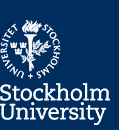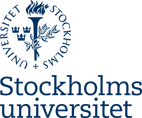Italy’s woes as a much maligned and misrepresented nation in the French-language encyclopedic compilations and travel literature of the eighteenth century appeared almost irreversible without responses from Italian encyclopedists. In 1783, some degree of reparation was found in the Encyclopédie méthodique de Padoue, a revised edition of Charles-Joseph Panckoucke’s Encyclopédie méthodique, published in Paris, 1782–1832. A group of Italian encyclopedists thoroughly engaged themselves in the rewriting the geographical articles, in particular, in the interest of correcting the representation of their culture, economics, politics, and trade that had been written by others. While the French-language solution of the Padua edition was appealing to those at the Seminario di Padova who sought buyers throughout Europe and in Italy alike among audiences comprised of nobles, merchants, and the educated bourgeoisie, the extension of the reading public into lower socio-economic classes who had become avid readers of periodical literature spawned new, more localized audiences who clamored for compilations written in Italian.
This paper will study one such encyclopedia, the Dizionario di geografia moderna composto per l’Enciclopedica metodica (1797), published in Padua, Italy at the renowned press run by the Seminario di Padova. The Dizionario was an Italian translation of the geographic novels of their French-language Encyclopédie méthodique de Padoue. The debate among the editorial board over the language of the compilation was fierce, with many preferring a full Italian translation of the Encyclopédie méthodique. Yet market concerns won out, since the projected audience was European, where French was the lingua franca. However, among the networks of compiler-translators, a person or group of people succeeded in producing an Italian-language version of the Encyclopédie méthodique de Padoue, at least in part. Operating anonymously, as did many translators and compilers, they translated, and adapted the geographical articles of the Méthodique de Padoue into Italian for a far less erudite audience. This paper will examine the criteria for translating and adapting the geographical content for a more popular Italian audience, analyzing its legacy in the evolution of encyclopedic print culture in Italy and Europe. The Dizionario’s stranded stratus is attributable to the limited print run that the compilation in all likelihood had, as we have been able to locate only one copy of the dictionary to date. The stranded nature of this compilation and, to some extent, other Italian-language compilations produced in eighteenth-century Italy, will also be examined.



